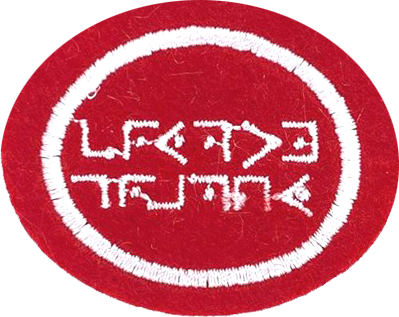Difference between revisions of "AY Honors/Cryptography/Answer Key"
| Line 123: | Line 123: | ||
</noinclude> | </noinclude> | ||
| − | A traditional Polybius Square is a 5X5 grid with the alphabet filling in the square (English alphabet needs a larger square, or combines two letters, such as I and J or U and V of C and K). Each square is then given a 2 digit code as per its row | + | A traditional Polybius Square is a 5X5 grid with the alphabet filling in the square (English alphabet needs a larger square, or combines two letters, such as I and J or U and V of C and K). Each square is then given a 2 digit code as per its column and row number. |
| + | |||
| + | [[File:Polybius Square.png|frame|center]] | ||
| + | |||
| + | Using the square above, we would encode the word "Pathfinder" as: "53 11 44 32 12 42 33 41 51 24" | ||
<!--T:89--> | <!--T:89--> | ||
Revision as of 01:00, 7 June 2025
1
Cryptography is the science or process of encoding and decoding messages to allow more secure transfer of information.
2
2a
In a code, words or phrases are encrypted (as opposed to individual letters)
2b
A Cipher encrypts a message at the level of individual or small groups of letters
2c
Steganography is the process of hiding data/information inside other data, for example hiding textual information in an image file
2d
Plain Text refers to the unecrypted information prior to encoding
2e
A key is the information necessary to encrypt and decrypt a particular message
2f
A public key is part of a two-key encryption/decryption model, where one key is private, and another is publicly available. Public Key Cryptography is also called Asymmetric Cryptography
2g
A one way function is a model of encrypting information where it is relatively easy to convert the data one way, but much more difficult to reverse the process. In some computer applications, this one way function results in a hash value, allowing secure storage of sensitive information or passwords.
3
3a
Transposition is a classic cipher that moves the position of letters in a word or phrase, rather than replacing them. At its simplest, this could involve just shifting things around (Hello Friend might be encoded as Olleh Dneirf). Other forms include a rail fence ciphers as shown below, which write the words in a zig-zag pattern and then encode across the rows.
A two-line rail fence cipher, to encode "Pathfinders Strong." Once entered into the blocks, we would then send the encoded message as "PTFNESTOGAHIDRSRN"
A three-line rail fence cipher, to encode "pathfinders strong." Once entered into the blocks, we would send the encoded message as "pfetgahidrsrntnso"
3b
A traditional Polybius Square is a 5X5 grid with the alphabet filling in the square (English alphabet needs a larger square, or combines two letters, such as I and J or U and V of C and K). Each square is then given a 2 digit code as per its column and row number.
Using the square above, we would encode the word "Pathfinder" as: "53 11 44 32 12 42 33 41 51 24"
3c
A Square cipher is one (like the Polybius Square) where the letters are placed in a grid, and their encoding represents where in the grid they were. Several squares may be combined to make a more complex cipher. A common one is a four square cipher, where four 5X5 grids are placed together to make a bigger square, the upper left and lower right 5X5 being standard alphabet layout, the other two usually having keywords to jumble the letters. Words to are broken into two-letter groups, and the substitution from each comes by moving across the row of the chosen letter and the along the column of the second letter to find the replacement value.
3d
A substitution cipher is a simple cipher, where each letter/number is replaced by an alternate letter/number/symbol. The characters are changed for the encoded message, but not the order of characters.
3e
In a polyalphabetic cipher, the substituted letter is determined both by the key and the placement in a word. So it may be that every third letter, the cipher shifts, or there is a different cipher for first letter, second letter, third letter, etc. In this style, the encoded message letters may represent different letters in the unencoded message, as different ciphers are used for different positions. It is more complicated to decode than a simple substitution cipher.
4
5
6
7
8
9





